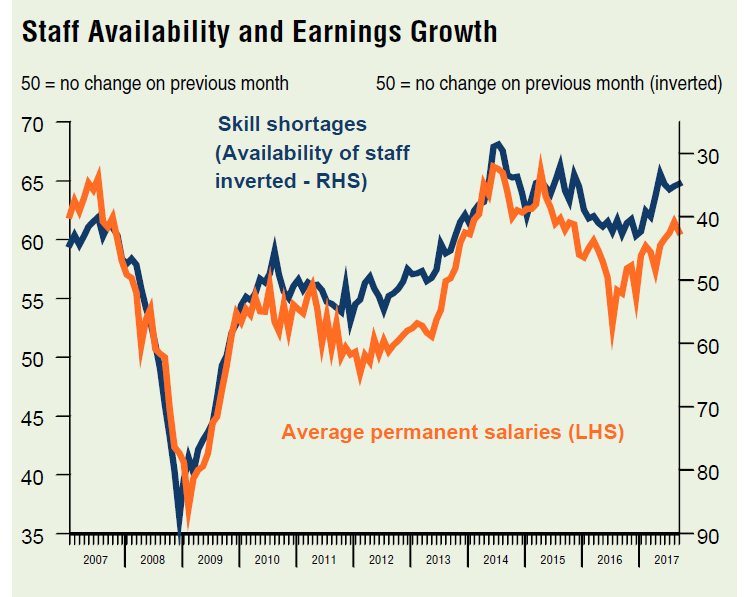October Report on Jobs
Key Points from the September Survey
- Permanent placements rise at weakest pace for five months
- Candidate shortages continue to drive up pay rates

1. Staff Appointments
Growth in permanent staff appointments eases
The number of people placed into permanent job roles continued to increase in September, stretching the current sequence of growth to 14 months. Though solid, the rate of expansion was the slowest recorded since April. Evidence indicated that strong demand for permanent staff across both new and existing clients supported the latest upturn. However, there were some reports that a lack of suitably skilled candidates had weighed on overall growth.
On a regional basis, growth of permanent placements was the most marked in the Midlands and the South of England.
2. Vacancies
Vacancies continue to rise sharply
There has been a further sharp increase in demand for staff. Steep growth of demand was signalled for permanent staff during September.
Other vacancy indicators
Data from the Office for National Statistics (ONS) indicated that job vacancies rose by 3.2% year-on-year in the three months to August. This was down only slightly from a 3.5% increase in the preceding three months.
3. Staff Availability
Availability of permanent staff
The availability of permanent candidates continued to fall sharply in September. Notably, the rate of reduction was the most marked for four months.
The South of England continued to record the steepest drop in permanent candidate numbers, though all remaining UK regions also saw sharp rates of contraction.
4. Pay Pressures
Permanent Salaries
Although the rate of salary growth softened since August, it remained sharp overall. Evidence indicated that a shortage of suitable candidates had placed upward pressure on pay.
The South of England saw the steepest increase in permanent starting salaries of all monitored UK regions, followed by Scotland.
5. Vacancies – Feature
Latest labour market data published by the Office for National Statistics (ONS) indicated that there were 774,000 job vacancies for June to August 2017. This represented an increase of 24,000 compared to the same time last year.
The official numbers back up the strong increases in staff demand. Notably, the ONS data indicated that the number of job vacancies in 2017 have exceeded any level since the series began in 2001. Vacancies broken down by sector revealed that the vast majority of unfulfilled roles (687,000) were in the services sector.
Simon Bean, Managing Director of Recruitment Connection says:
“The above trends highlight that it is becoming increasing difficult to fill vacancies for permanent roles. The shortage of suitable candidates has in turn triggered increased pressure on salaries.”
“The struggle to recruit for permanent places, particularly in the financial sector, resonates throughout the UK; London, however, has been hit the hardest and placements have declined for the first time in eleven months.”



